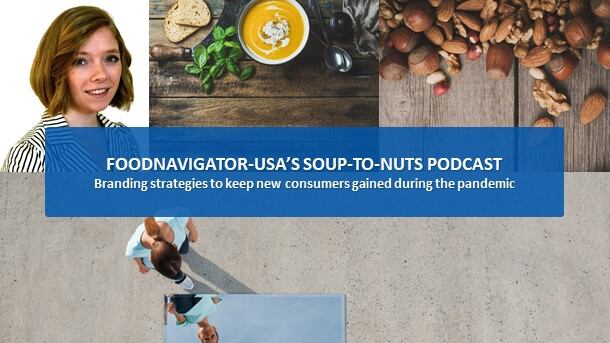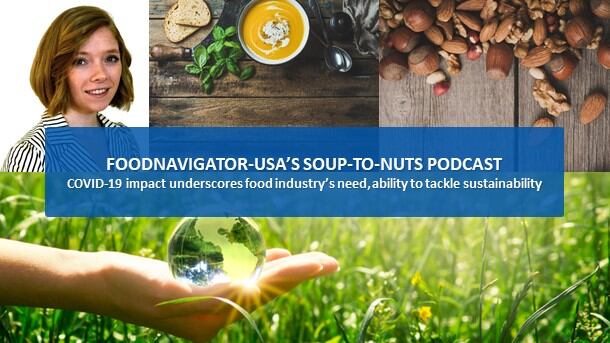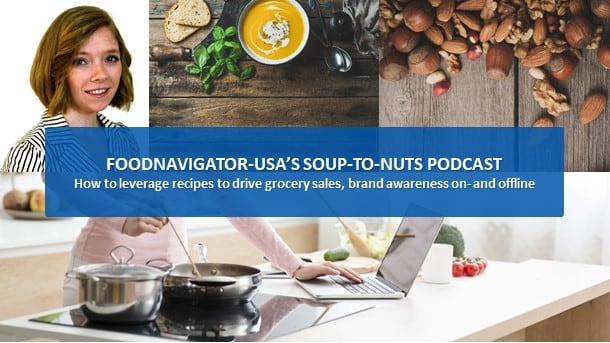In the early days of the pandemic, conscious consumerism took a back seat to simply stocking pantries with whatever stores offered, but as supply chains have recovered and more brands are able to meet increased demand, shoppers once again are evaluating options based on how they meet shared social values, including sustainability and racial equality.
But simply adding on-trend callouts and buzz words to packaging or posting performative messages on corporate websites or social media isn’t enough to win over mindful consumers, warns Beth Taubner, who is a transformational brand strategist and creative director of Mercurylab.
Rather, she explains, brands seeking to create lasting connections with modern consumers must first take a deep dive into their own psyche to identify their authentic beliefs and values through a process she calls “real-world consciousness raising.” She adds, these must then be woven consistently into every aspect of branding and messaging, and be given sufficient time to take hold to be truly transformational for brands.
In this episode of FoodNavigator-USA’s Soup-To-Nuts podcast, Taubner shares strategies to navigate this process, which she developed for entrepreneurs and brands of all sizes and which she also offers through a range of services, workshops and turnkey solutions.
[Editor’s note: Never miss another episode of FoodNavigator-USA’s Soup-To-Nuts podcast – subscribe today.]
Opportunities seized and missed during pandemic
While the chaos of the pandemic has devasted many aspects of the food and beverage industry, it also has created opportunity for brands and retailers to reflect on how better to identify and meet evolving consumer needs – something that Taubner says some have taken advantage of more effectively than others.
At the retail level, Taubner pointed to Walmart and Target as positive examples of businesses that reacted quickly to consumers’ evolving needs in the pandemic, and as a result gained market share. But Amazon’s failure to even deliver on its basic brand tenet of fast delivery during the early pandemic cost it – as did what Taubner described as disingenuous communications about how it valued and treated employees.
From a CPG perspective, Taubner said, the pandemic has revealed several trends on which smaller, nimbler and better-for-you brands are well positioned to act. These include an emerging demand for DIY food, products that are local or from specific provenances, and brands that approach packaging more sustainably.
A time for reflection
For companies to effectively capitalize on these trends or make the most of opportunities presented by the pandemic, Taubner says, they first need a clear sense of who they are, which she helps uncover at Mercurylab through what she calls “consciousness raising.”
“Traditional brand strategy, which is where my training was, is based on discussions of differentiation and external perception. Now, those things are important, but our work is focused on internal culture and belief systems in a brand,” and by taking a “profound look into the psyche of your brand … we can develop a blueprint that is right for you,” she explained.
Ultimately, she added, “you want to be in a place where you know yourself so well that you can target the consumer and you understand who your consumer is.”
For each entrepreneur, company or brand – no matter the size or industry – Taubner says she always starts her analysis by asking clients to complete a writing exercise, which she notes listeners can, and should, do on their own if they want a clearer picture of their values, what they offer and where they sit in the competitive landscape.
She recommends setting aside an hour and finding a safe space without distractions where executives can write down everything they are frustrated or worried about, problems they are facing, strengths they can leverage and strategies they have previously tried. After doing this once or twice, Taubner says, companies should be able to see areas for improvement and begin to see the next steps.
Once an entrepreneur or company puts self-reflections on paper, Taubner says, they also can more easily distill from them messaging that can be used in every aspect of a business – from product development to packaging to marketing and communication.
This messaging must then be consistently applied and given sufficient time to take hold.
Don’t delay strategic development
Delving into a brand’s values and creating a communications strategy takes time and funds – two things that many smaller brands may not have in excess when first launching. And while it may be tempting to put off resource-intensive undertakings like this to instead focus first on driving revenues, Taubner cautions new brands and businesses not to delay strategic development.
“In particular, for younger brands, they see a trend and they just jump on it, even if its not right for who they are and what their strategy is. I find a lot of times they’re under-financed and in a hurry,” but if they are honest about the funds and where they want to go then creating a strategic plan earlier – rather than later – it will help get them there within their means, she said.
How to avoid common missteps
Another common branding mistake that Taubner says she sees is companies or entrepreneurs taking on too much with insufficient dedicated resources.
For example, she says, entrepreneurs at startups often do everything from creating the product, packaging, selling it at farmers markets and driving it to independent stores to updating the website and social media accounts. She recommends that at some point, companies will be more effective if they direct money to having a salesperson work alongside them so that they can more effectively focus on fewer aspects of the business.
Taubner says she also often sees companies not fully use low-cost or free tools, such as social media, competitions and earned press, to stretch their branding budgets.
For example, she said, companies often use social media simply to post news about the brand, rather than using it engage with consumers and create community. Easy ways to do this beyond responding to comments is to do ‘takeovers’ of other accounts or partner with like-minded brands on social events.
The last common mistake that Taubner says she often sees is also perhaps the most unexpected – and that is dismissing the terrible voice in your head that raises self-doubt.
Taubner explains that everyone has that voice and there is no way to kill it, so you might as well invite to the party, hear it out and see if there are useful elements of what it is saying.
“If there is a naysayer voice that doesn’t have courage, listen to that voice. Maybe it wants you to be more prudent. Maybe it wants you to slow down. Maybe it has something really valid to offer you,” she said.
Find a helping hand
While there is no doubt that taking on the negative voice in your head – or even delving deep into your own psyche – to better identify a brand’s authentic core is a challenge, Taubner stresses it is not one that entrepreneurs or brands needs to tackle on their own. Mercurylab offers workshops, a la cart services and full programs to fit any size company or brand. More details can be found at mercurylab.com.
But even if entrepreneurs and brands opt not to work with Mercurylab, Taubner encourages them to take even just 15 minutes a week to reflect and write down their feelings, where they are and where they want to go -- and over time she says this investment will add up and companies will gain better clarity into who they are where they can go.




